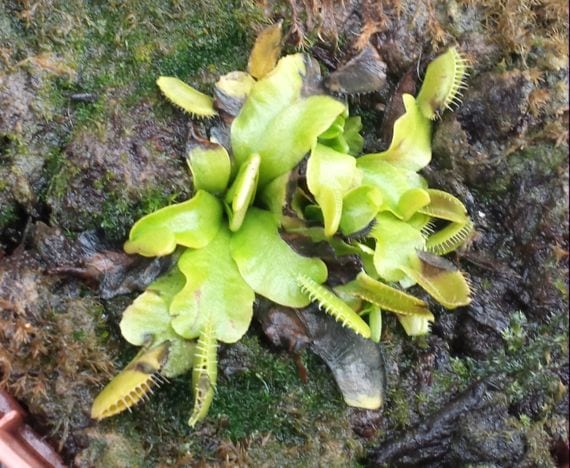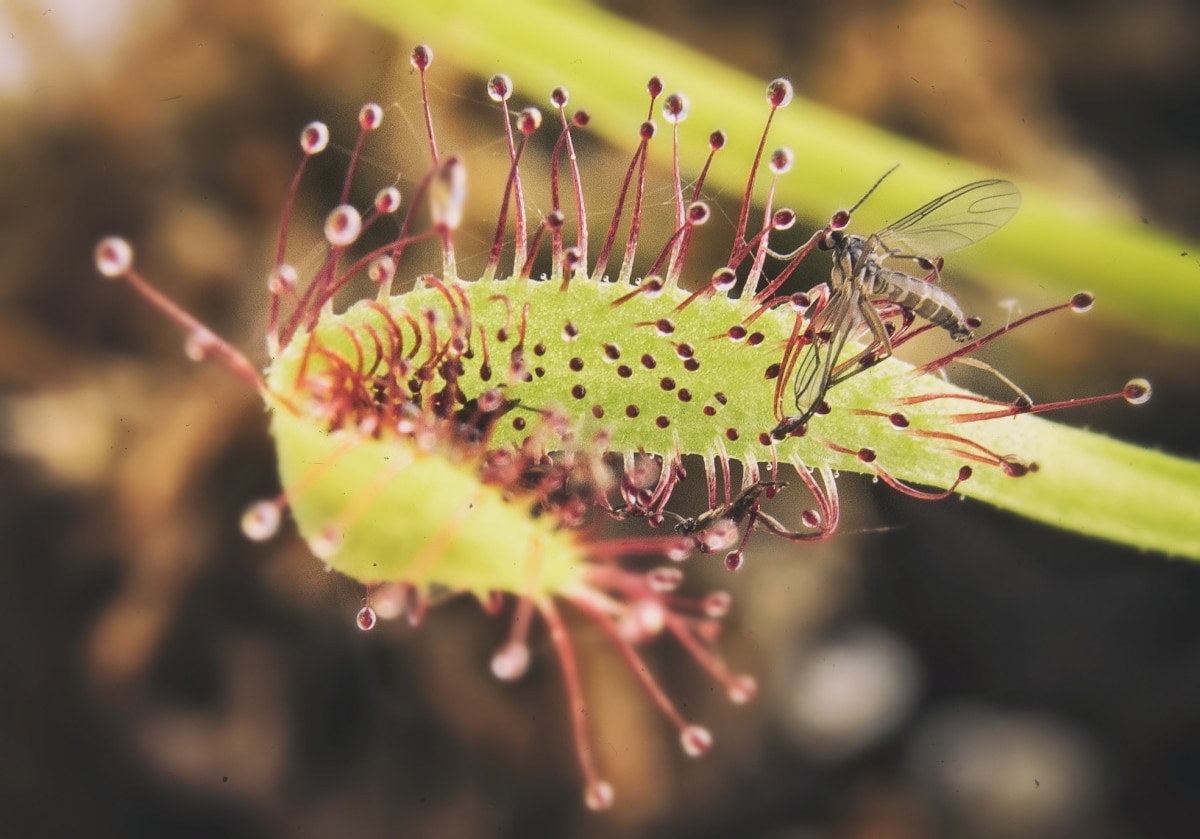
Image - Wikimedia / David J. Stang
The cultivation of carnivorous plants is not always easy: it must be taken into account that they need a special substrate for them and place them in the place where they will be able to grow under conditions. But sometimes there is something we do wrong, and from one day to the next we see that they are drying up.
This problem is frequent, and also in most cases its solution is simple. So if you would like to know why is your carnivorous plant drying out, and what you have to do to make it do it normally again, then we are going to see it.
It is entering winter rest
If you have a carnivore like a Sarracenia or a Dionaea, when winter comes the leaves dry. This is completely normal, and should not worry us, since it is a sign that it is going to rest.
But beware: although they need to be cold for a few months to be able to resume their growth in spring, they should not be exposed to temperatures below -3ºC, since then not only some leaf would dry out, if not the entire plant. Here you have more information:

There are problems with irrigation, and / or with irrigation water
And is that if we water more, or less than it touches, and / or we use water that is not adequate, the carnivores can dry out. But in addition, they will manifest other symptoms such as:
- brown or black leaves and / or traps
- the traps do not open
- the substrate is very dry and compact, or on the contrary so humid that it has turned green
- there may be fungi on the roots and / or leaves of the plant
To do? Well, again, it depends:
- If the substrate is dryWe will take the pot and put it in a basin with distilled water for at least 30 minutes, until it is soaked.
- If on the contrary it is very humid, we will suspend the irrigation temporarily.
- If you have any brown or black parts, we will remove it with clean scissors and previously disinfected with distilled water.
- If we see that it has fungus, that is, white or grayish »powder» somewhere, we will cut and treat with fungicide.
How often to water the carnivores?
Do carnivores need little or a lot of water? Well, it depends a lot on the type. As we have commented above, You can put a plate underneath the Sarracenias and fill it with water every time you see it empty; but there are others that, however, should not be watered so often, such as Nepenthes, Drosera, Cephalotus, Heliamphora and Dionaea.
Watering these plants should be frequent during the summer, since the substrate must always remain, to some extent, moist. But their roots must not be permanently flooded. Therefore, it is necessary to water every 2 or 3 days during the hot and dry season, and less the rest of the year. Of course, you have to use distilled water, osmosis or pure rain.
The sun gives you directly

Of all the types of carnivores that exist, there are some that if the sun hits them they burn. There are even others that, although in their habitat it does, in other areas it is better to grow them in semi-shade or shade. Which are? According to my experience growing them in Mallorca, these are:
- Carnivorous plants in direct sun: Saracenia.
- Carnivorous plants that want sun but filtered (through a shade mesh for example): Dionaea, Heliamphora, Cephalotus, Pinguicula, Drosophyllum.
- Carnivorous plants that want some shade: Drosera, Nepenthes.
But I insist, it will depend a lot on the weather. The sun does not "press" the same in my area as in Galicia for example. In fact, I know Galician people who have Dionaea in direct sun, acclimatized yes, and grows luxuriously.
In any case, if you see that your plants grow slower and slower, or they even draw smaller and smaller traps, you have to think that maybe it's because they need some shade.
The substrate is not suitable for carnivorous plants
The use of substrates that are fertilized, as are most of those marketed for plants, they are not suitable for carnivores, since its roots cannot absorb nutrients directly, and consequently they burn.
Thus, if it is drying and has a substrate of this type, you have to change it for one that is suitable for it, such as unfertilized blonde peat (for sale here) mixed with perlite (for sale here) in equal parts.
Has been paid

Image - Flickr / Ramón Portellano
These plants do not have to be fertilized, since they have traps precisely to catch their prey and feed. Therefore, if they are fertilized, they will quickly dry out and could die if you do not act in time. Thus, If you have, you have to change the substrate, carefully.
Dip its roots in distilled water to "clean" for a few minutes, and then plant your carnivore in a new plastic pot. -with holes in its base- with blond peat mixed with perlite in equal parts. If you see that it has any black or brown part, you have to remove it so that the problem does not spread.
As you have seen, there are several reasons why carnivorous plant can dry out. I hope this article helps you to know what is happening to your plant, and what are the measures you can take to make it recover as soon as possible.